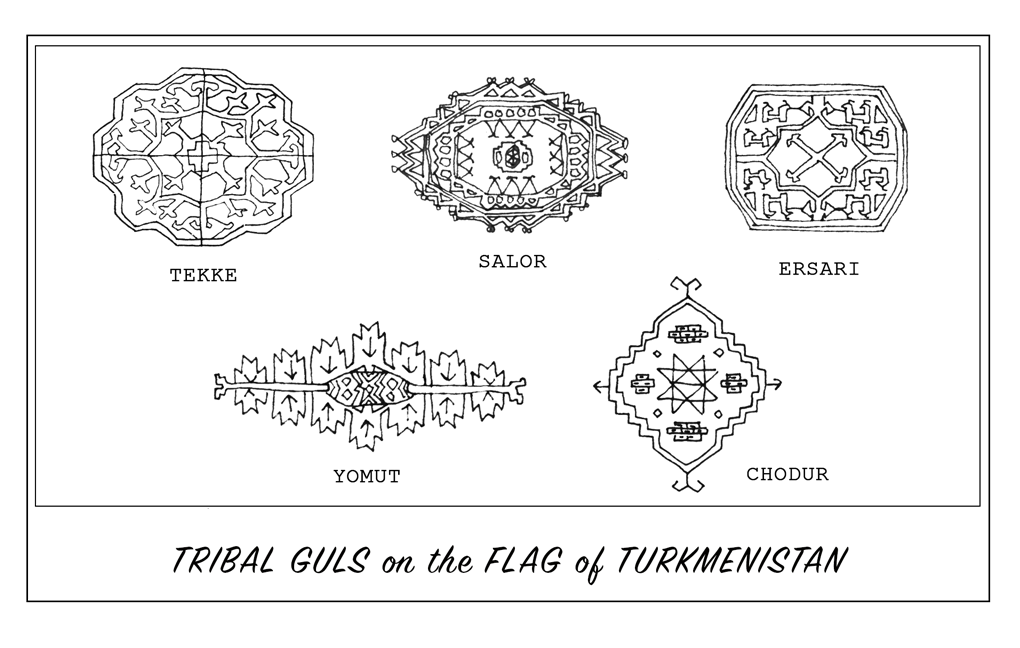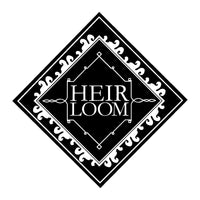

Brief History of the Turkmen
The Turkmen are a nomadic people of Central Asia who live primarily in Turkmenistan, Persia, Afghanistan and Uzbekistan. Turkmen culture is a largely oral culture, lacking a written history. It is believed that they are at least in part descended from Oghuz Turks who migrated to the region from the Siberian Steppes. The same peoples would also continue their migration in many waves through the Persian plateau and Anatolia into what is modern day Turkey.
The first written accounts labeling the group as “Turkmen” appear around one thousand years ago. Later accounts, most notably The Diwan of Mahmud Kashgari in the 11th century and Rashid al-Din’s 14th century “Jami’ al-Tawarikh” (World History), would describe different Turkmen sub tribes each with distinct tamghas or tribal insignias which were not unlike the different heraldic devices used in medieval Europe. These clan structures were not always coherent and less permanent than one would expect. Changing environmental factors and constant warfare, both among the tribes as well as with great regional powers, lead to constant relocation, renaming and formation of new tribal entities over the centuries.
One of the oldest tribes with the most illustrious histories was the Salor tribe. Once the most dominant and prestigious tribe, their power would slowly weaken until they would ultimately cease to exist as an entity at the end of the 19th Century. Weavings from this group tend to be some of the oldest available as well as the most sought after.
The Yomut could be considered to be the most settled of the Turkmen tribes, and also the most Persianized. They were one of the most powerful tribes until the Tekke came to dominate the region which in tandem with other factors forced the Yomut to branch off into two subgroups. One group would migrate north towards what is now modern day Uzbekistan while the other group headed south into Northern Persia. As each tribe’s power and wealth rose and fell, so did the volume and quality of their weavings. The continuous warfare in the 19th century and subsequent Russian domination resulted in a slow loss of ancient Turkmen traditions. By the 20th century, Turkmen rugs would evolve from a domestic requirement to primarily being a commercial product.

A Turkmen Dwelling
The traditional Central Asian tent is round, with a domed roof, and felt covering which is called the öy, which means dwelling. Yurt, or yuwirt, means home or literally the imprint of the campsite. In the west the terms are often used interchangeably and yurt has become widely used as synonym for tent in the lexicon. The tent is built on a framework of intertwined canes, and held together by long and intricately woven tent bands. Inside the tent, large woven bags containing bedding, produce, and other necessities, are stacked against the walls. Hanging along the walls are smaller bags containing personal items like jewelry or toiletries. Bedclothes and blankets are stacked up against the walls during the day, and covered in colorful kilims. Kilims can also be hung along the walls of the tent as decoration or to divide the tent up into different living quarters. The tent is the center of family life, the primordial shelter. Thus it is important to protect it from the evil eye and other superstitions with amulets and talismans or their depictions in order to keep the negative spirits away. These objects also act as the decoration for the tent.
Since the main production of nomadic people in Central Asia is sheep, everything is made out of wool, from the tentbands and animal trappings to the utilitarian and prestige weavings.

Turkmen Weaving Culture
Weaving is one of the primary aspects of Turkmen culture. It was an essential component of the nomadic lifestyle and remains an integral part Turkmen heritage to this day. When the modern nation of Turkmenistan was established in 1991, five guls were included in the nation’s flag. They were meant to pay homage to the carpet weaving tradition and honor the five dominant Turkmen tribes – Tekke, Saryk (Salor Gul), Ersari, Yomut & Chodur. Rugs and trappings possess both utilitarian and ritual importance to the Turkmen. Besides their use within the tent, they were also used for storage and decoration while traveling during the migrations. Weddings are the most important event in Turkmen culture. Special weavings were created as part of the brides dowry and in particular shapes for different parts of the camel and palanquin or “kejebe” which would carry her to the groom. Although Turkmen society is very patriarchal, women play an important role in the weaving culture. They watch the flock, make felts, weave rugs and even erect and set up the tent. The skill of weaving is both a valuable asset and respected profession amongst the Turkmen and their rugs have long been considered valuable within the culture and even treated as an accepted form of value.
One of the most noticeable characteristics of Turkmen weaving is the color palette: dominant colors are red to a reddish/brown and less commonly shades of purple. Yomut weavings in particular have a wider color palette than other Turkmen weaving which goes beyond the reds and browns to include purples, white, yellow, shades of blue, and even green. Turkmen weaving has very distinct gul ornamentation and patterning as well as more strict graphical continuity than any other tradition. Gul, which literally means flower, refers to the distinct tribal insignias prevalent on a majority of the weavings.
Turkmen rugs are one of the most loyally collected categories of rugs with the some of the most fervent collectors, who appreciate the balance and proportions which to most initially appear quite similar to one another. With further study and familiarity the collector picks up on the subtle nuances which allow for endless variety of pattern and details, as well as variations in shades of color. Most appealing to many collectors and scholars are the mystery and unanswered questions surrounding the group. Although certain guls suggest certain tribal affiliation, it isn’t always as straightforward. Tribes were constantly dominating and assimilating into one another. Many collectors will also look to structure for clues about these developments. Yomut rugs for example tend to have these characteristics: the warp is usually either undyed wool or goat hair, sometimes even a mix of the two. Sporadically, cotton is also used. The weft is usually also undyed wool, and occasionally is mixed in with cotton or even camel hair. The knots used are both symmetric and asymmetric. Yomut rugs tend to be based off a darker palette, with purple or brown fields.

The Ensi
Among scholars there is still much contention about whether the Ensi was used outside or inside the tent, everyday or only for special occasions. There are also many questions about their layout and symbolism. The cross/quarter panelled design found in all ensi rugs is known as a Hatchli format. The field is divided into four panels, with one bar going vertically and one going horizontally. Each panel is decorated with a repetitive motif, arranged in rows or diagonal arrays, often without any enclosing lines. Yomut ensis show enormous variability in the repetitive field motif. At top and/or bottom of the ensi are skirt borders, known as elems. Typical elem patterns include repetitive floral motifs, tree motifs, and the less frequently used eagle motif. Occasionally there is a double elem stacked on top of one another. In the case of our example, the ensi has a top and bottom elem that both contain an Yomut eagle motif.
Some contend the ensi may represent the “gateway to paradise”. The lower panel associated with the ground or earth could represents the “sky door” or “vault of the sky” with the upper panel associated with the sky or the heavens themselves. The central cross has been interpreted both as a talisman to ward off evil as well as the tree of life. The lateral main borders can contain various designs with different meanings: a meander design can symbolize ascension from the ground to the sky; a tree form or multi-branched candelabra can suggest either a totemic pole or birds perched on a tree.
Others still see the ensi simply as an interpretation of a wood-panelled door.
Since the tent is the center of family life and must be protected, it would make sense for the rug at the entrance of the tent to be special, imbued with protective symbols to keep out any negative energy.


We sourced our information from: Tribal Rugs: Treasures of the Black Tent, Brian W. Macdonald; Oriental Rugs: A Complete Guide, Murray L. Eiland, Jr. & Murray Eiland III; Tribal Rugs: A Complete Guide to Nomadic and Village Carpets, James Opie; Between the Black Desert and the Red: Turkmen Carpets from the Wiedersperg Collection [pictured at left], Robert Pinner & Murray L. Eiland, Jr., as well as Hali Magazine, and Turkotek.com. Map illustrated by Lynn Hunter


